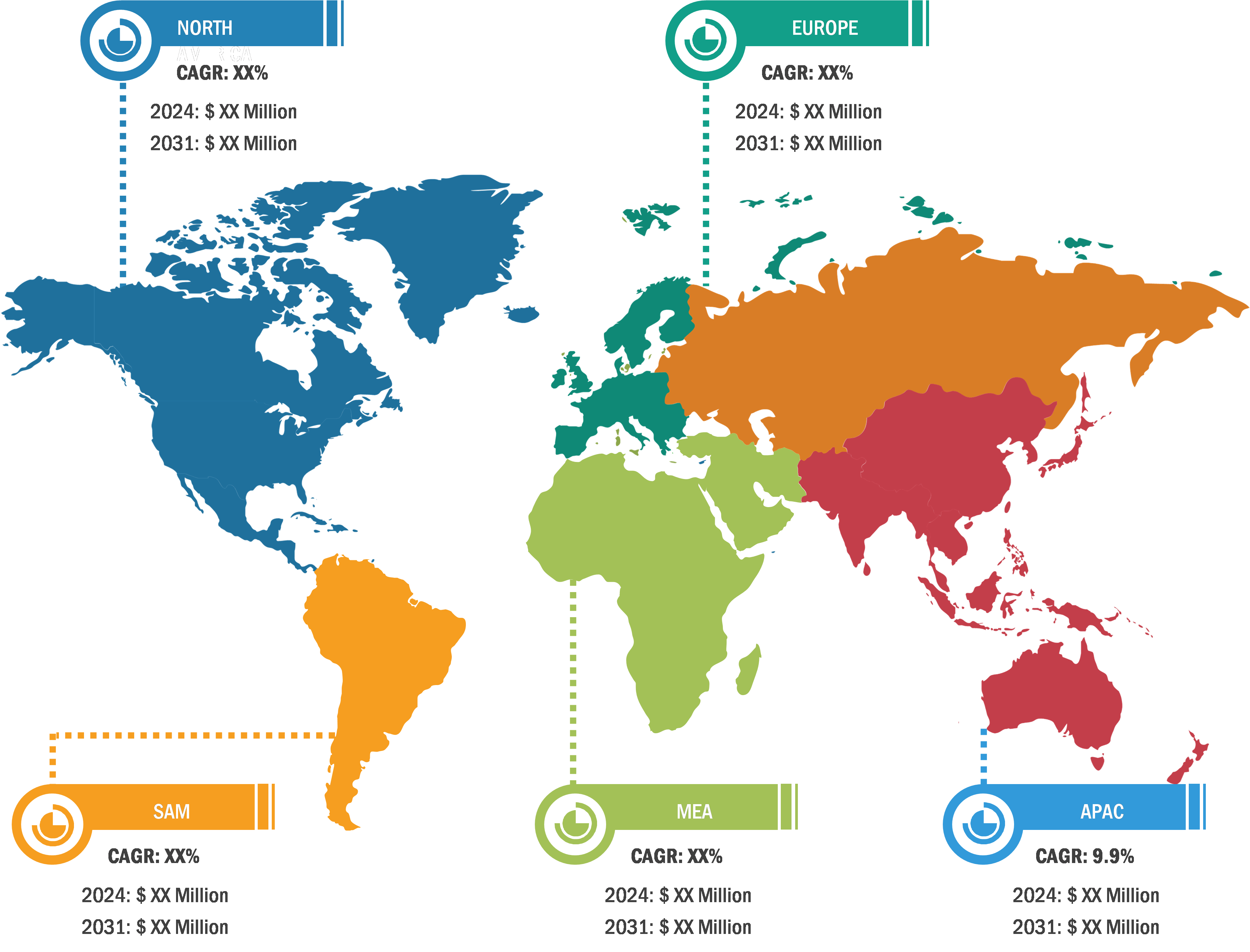Increasing Demand for Electric Vehicles Drives GNSS Chip Market
According to our latest market study on "GNSS Chip Market Size and Forecast (2021–2031), Global and Regional Share, Trend, and Growth Opportunity Analysis — by Device, Application, and Vertical," the market was valued at US$ 5.24 billion in 2024 and is anticipated to reach US$ 9.17 billion by 2031; it is estimated to record a CAGR of 8.3 % from 2024 to 2031. The report includes growth prospects in light of current GNSS chip market trends and driving factors influencing the market growth.
Big data analytics can be used to analyze vast amounts of GNSS data, leading to a better understanding of user behavior, signal propagation, and error correction. These analytics can enhance the development of more accurate, efficient, and reliable GNSS chips. Also, big data can be used to personalize location-based services, making them relevant and valuable to users, subsequently boosting the demand for GNSS chips in applications such as navigation, asset tracking, and geospatial mapping. In November 2022, a project named Real-Time Integrity for GNSS Using Opportunistic Receivers (RIGOUR) was started. RIGOR's objective was to demonstrate the feasibility and quantification of the benefits (with respect to existing Integrity systems) of "Real-time big data processing for GNSS Integrity" using large-scale simulations.
GNSS Chip Market Analysis – by Geography, 2024
GNSS Chip Market Size and Forecast (2021 - 2031), Global and Regional Share, Trend, and Growth Opportunity Analysis Report Coverage: By Device (Smartphones, Tablets, Personal Navigation Devices, In-Vehicle Systems, and Others), Application (Navigation & Location-Based Services, Mapping and Surveying, Telematics, Timing & Synchronization, and Others), Vertical (Consumer Electronics, Automotive & Transportation, Military and Defense, Marine, and Others), and Geography
GNSS Chip Market Size, Share, Growth & Scope | Analysis 2031
Download Free Sample
Source: The Insight Partners Analysis
Augmented reality (AR) applications rely heavily on accurate and real-time location data, which GNSS chips provide. As AR adoption grows across sectors such as gaming, retail, and manufacturing, the demand for GNSS chips is likely to surge. In addition, AR is transforming GNSS surveying stakeouts through real-time visualization, improved accuracy, and increased efficiency. Also, through the intuitive and immersive experience that augmented reality offers, surveyors can better understand the context and layout of the surveying site. During surveillance, this enhanced spatial awareness facilitates more informed decision-making. Thus, growing demand and adoption of advanced technologies and the combined influence of big data and augmented reality is likely to propel the GNSS chip market growth in the coming years.
The scope of the GNSS chip market report focuses on North America (US, Canada, and Mexico), Europe (Spain, UK, Germany, France, Italy, and Rest of Europe), Asia Pacific (South Korea, China, India, Japan, Australia, and Rest of Asia Pacific), Middle East & Africa (South Africa, Saudi Arabia, UAE, and Rest of Middle East & Africa), and South & Central America (Brazil, Argentina, and Rest of South & Central America). The presence of large enterprises, technological advancements, and strong research and development capabilities in North America are anticipated to drive the demand for GNSS chips. The critical factor favoring the GNSS chip market growth in North America is the increase in technological advancements coupled with the rise in government support for the adoption of unmanned aerial vehicles (UAVs). The governments in the region also support drone progress through new deployment, spectrum allocations, and infrastructure by adhering to various regulations (such as Federal Aviation Administration (FAA) regulations in the US). Moreover, the increasing penetration of connected vehicles or autonomous vehicles is most likely to drive market GNSS chip growth during the forecast period.
In North America, the US held the largest GNSS chip market share in 2024. Location-based services (LBS) are more accurate than the regulatory mandates for emergency callers and other user services and applications in the US. As a result, several cellular phone and network manufacturers in the country focus on providing LBS by engaging in organic and inorganic strategies. For instance, in June 2023, the Air Force Research Laboratory (AFRL) partnered with Luminous Cyber Corp. to create a resilient GPS alternative for areas with unreliable coverage or vulnerability to interference. Luminous Cyber Corp. specializes in developing Alternative-Position Navigation and Timing (A-PNT) solutions for applications such as crewed and uncrewed orbital, avionic, marine, and mounted land-based systems. The Navstar GPS, which is an all-weather, space-based navigation system, was continuously developed by the United States Department of Defense (DoD) to meet the demand of the US military forces and accurately determine their position, velocity, and time in a standard reference system anywhere on or near the Earth. The deployment of GNSS-based Positive Train Control systems in the US has driven initial shipments within North America. Also, the presence of key GNSS manufacturers, including Qualcomm Incorporated, Broadcom Limited, Intel Corporation, and Skyworks Solutions, in the country is likely to have a significant impact on the GNSS chip market forecast in the next few years.
Qualcomm Inc, Broadcom Inc, Septentrio NV, Trimble Inc, Furuno Electric Co Ltd, MediaTek Inc, STMicroelectronics NV, Skyworks Solutions Inc, u-blox Holding AG, and Quectel Wireless Solutions Co Ltd are among the key players profiled in the GNSS chip market report. Several other major players were also studied and analyzed in the GNSS chip market report to get a holistic view of the market and its ecosystem. The market analysis provides detailed market insights, which help the key players strategize their growth.
Contact Us
Phone: +1-646-491-9876
Email Id: sales@theinsightpartners.com